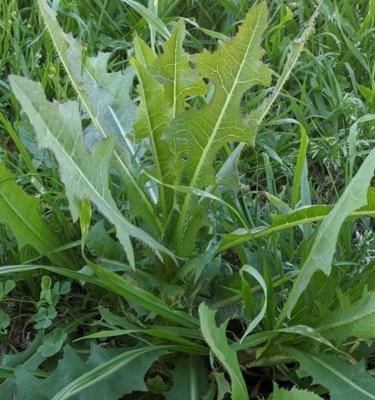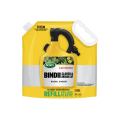

How To Kill Broadleaf Weeds
The word ‘weed’ is used to describe any plant which is growing in a place where it is not wanted. ‘Broadleaf weeds’ are those which typically have wide and net-veined leaves, unlike grassy weeds and sedges, which have narrower, often singular leaves.
Broadleaf weeds are often classified by their life span:
- Annuals. These germinate, grow, produce seed and die within a single year.
- Biennials. These complete the same lifecycle as an annual, but over the course of up to two years.
- Perennials. These live for two years or more and reproduce through seed and/or vegetatively.
Grouping broadleaf weeds in this way is useful as it can help to determine the best way to control them. Broadleaf weeds are very successful at sustaining themselves, either through being resilient to attempts to kill them, or by being able to reproduce freely and quickly.
Some of the most common broadleaf weeds found in our lawns – and the other names they are known by – are:
Annual & biennials:
- Bindii (Soliva Sessilis, Lawn burweed, spurweed, jo-jo, onehunga)
- Capeweed (Arctotheca calendula)
- Chickweed (Stellaria Media)
- Cudweed (Gnaphalium sphaericum)
- Fat Hen (Chenopodium Album)
- Fleabane (Conyza spp.)
Perennials:
- Cats ear (Hypochaeris radicata, flatweed)
- Creeping buttercup (Ranunculus repens)
- Creeping oxalis (Oxalis corniculata, wood sorrel)
- Dandelion (Taraxacum spp.)
- Docks (Rumex spp.)
- Ribwort (Plantago lanceolata, Lamb’s tongue, plantain)
- Soursob (Oxalis pes-caprae)
- White clover (Trifolium repens)
There are thousands of different broadleaf weeds, and it is perfectly natural to find them in every garden. Being able to identify them means being able to take the right action to get rid of them when they become a problem.
How to identify Broadleaf Weeds
Broadleaf lawn weeds usually have a:
- Wide leaf
- Network of veins
- Solid stem
The broadleaf weeds you are likely to encounter in your yard can be identified fairly easily:
- Bindii. Sharp under-foot and so rather unpleasant to walk or play on. Feathery foliage, with small prickly burrs and yellow flowers.
- Capeweed. Yellow flowers with a dark centre, and deep roots. Leaves are formed in a rosette shape and are pale green underneath.
- Cats ear. Leaves are flat to the surface, with yellow flowers.
- Chickweed. Lush green growth with small white flowers.
- Creeping oxalis. Small yellow five-petalled flowers, and a clover-like leaf which may be green or occasionally purple-red. Grows very low to the ground, and has a small but strong tap root, spreading through brittle rhizomes and bulbils.
- Creeping buttercup. Five yellow bright petals, the stems creep across the lawn, putting down new roots as it travels. Roots are short but tough.
- Cudweed. Smooth, round-tipped green leaves which are pale and noticeably soft beneath. Flowers are pink or purple.
- Dandelion. Large yellow flowers which turn into fluffy balls of seed heads. Heavily toothed leaves which may be flat to the ground or more upright. Has a thick tap root which will re-shoot if not removed entirely.
- Docks. Thick shiny leaves with a roundly-pointed tip, and a strong tap root.
- Fat Hen. Rhomboid shaped leaves near the bottom of the stem, branching out towards the top. Towering stalks of multiple seeds.
- Fleabane. Much taller than many other common broadleaf weeds. In a neglected lawn the stiff stem of this plant can reach over a metre in height.
- Ribwort. Long leaves with very visible straight veins. An acorn shaped dark green flower with small white petals branching out from it. Flower stalk is tall, but the plant will often appear very flat on a well used lawn.
- Soursob. Yellow flowers on a stalk up to 20cm. Each leaf is in three parts, and beneath the ground are numerous bulbils which help it to spread when disturbed.
- White clover. Loosely formed round, white flower heads which turn brown. Three round, slightly serrated leaves on each leaf stalk. Tough stems which lie close to the soil surface, putting down new roots along the way.
For those wanting a perfect lawn, anything that isn’t grass shouldn’t be there. Monitor for weeds themselves, but also for other indicators which suggest there may be a problem.
Recognising the symptoms of broadleaf weeds
Broadleaf weeds in lawn are characterised by their persistence. There is a good chance that the broadleaf weed will have been there or nearby before it was noticed, and it will persist unless treated. The most obvious symptom of the presence of broadleaf weeds is simply that where there should be grass, there is another plant. It may have completely destroyed the grass in that area, or just weakened it by out-competing lawn grasses, taking valuable water and nutrients. Either way, the result is a patchwork lawn of various shades of green and brown.
How to kill broadleaf weeds
Broadleaf weeds have a detrimental effect on lawns and can spread quickly, so get rid of them as soon as possible.
All broadleaf weeds are best stopped before they are able to flower and set seed. This is particularly important for annual weeds, where spreading seed is the main way in which they reproduce, and so successfully controlling them means disrupting their seed-producing lifecycle.
Mowing can weaken some broadleaf plants, such as docks, but make sure to collect the clippings rather than leaving on the surface where seeds may germinate or plant parts regenerate. Bindii will grow well in a lawn which is cut too short, so if that is the main problem weed, raise the blades of the mower to leave some length in the grass.
Remove bindii, chickweed, cudweed, docks, and white clover with a hand- or border-fork, depending on the size of the plant.
Broadleaf weedkillers are often the best way of controlling perennial weeds, as they will usually spread from sections of the plant, as well as from seed. ‘Pre-emergent’ broadleaf weedkillers are helpful in stopping broadleaf weeds from germinating. A broadleaf herbicide can be sprayed on most lawn types to kill weeds, and should not affect the grass. Always read the label carefully and apply at the manufacturer’s recommended rate and frequency.
We suggest Scotts Lawn Builder™ Buffalo Weed, Feed & Green Up Liquid Lawn Fertiliser for use on Buffalo lawns, and Scotts Lawn Builder™ Weed, Feed & Green Up Liquid Lawn Fertiliser for other types of lawn. These products will control capeweed, chickweed, Oxalis spp., cudweed, dandelion, dock, fleabane, and ribwort. We recommend Scotts Lawn Builder™ Bindii Weedkiller in particular for bindii and clover problems. Do not mow or water after applying the treatment, as this will remove some of the herbicide.
Using a combined broadleaf weedkiller and fertiliser, such as Scotts Lawn Builder™ +Weedkill Slow Release Lawn Fertiliser, can be a great way to give the lawn a helping hand in recovering from a broadleaf weed problem. White clover thrives in soil with low nitrogen levels, so using a high nitrogen fertiliser means the grass can provide healthy competition.
Expect to make several applications of weedkiller to get rid of the weed. This is often best done in the winter and spring, but check the instructions to apply it at the optimum time for the weed being treated.
After removing broadleaf weeds, parts of the lawn may appear pale and brown. Feed regularly to help it recover, and topdress to regain an even and attractive lawn.
How to prevent broadleaf weeds
Keep the lawn healthy by feeding, mowing and watering regularly. This helps the grass to stay strong and able to match weeds in competing for water and nutrients.
Monitor the lawn for non-grass plants, and act quickly. Smaller patches are much easier to treat and repair than a weed which has been allowed to spread freely.
Keep borders weed free by hoeing and mulching, so that plants cannot spread to the lawn or other parts of the garden.












